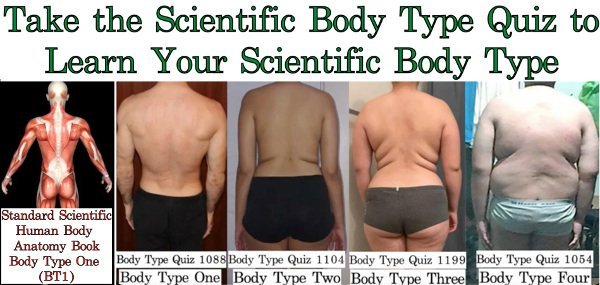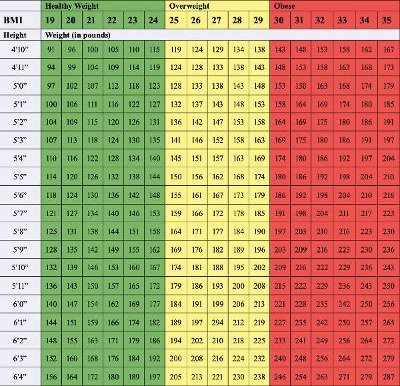
Fellow One Research lead scientific researcher, Marc Nelson, appeared on The Run Podcast with host Manny Wilson to discuss how genetic scientific body types — The Four Body Types — affect sports and elite athletes. The conversation clarified a brief history of body types, including the thoroughly debunked somatotype endomorph, mesomorph, and ectomorph three body types as well as hormone body types, Kibbe, triangle, 10, pear, apple body types, etc. All of those arbitrary, subjective, baseless, nonsense shapes are not based on real science and have no definable scientific variables.
The Standard Scientific Human Body Anatomy Book Body Type One (BT1) found in any scientifically approved human body anatomy book is the only body type currently accepted by mainstream scientists and medical doctors. Like any human being, when you visit your medical doctor for your annual check-up your body and health are being judged by the Standard Body Type One (BT1) in relation to Body Mass Index (BMI) and basal metabolic rate (BMR). When you see your doctor next, ask them what your scientific body type is.
Genetic Scientific Body Types, The Four Body Types – The Run Podcast with Manny Wilson

The Four Body Types are scientifically defined by genetics in direct relation to vertebrae and muscle/mass development (or lack thereof) relative to skinny fat (cellulite, thin fat, loose skin, saggy skin, crepey skin, normal weight obesity) and excess fat tendencies (being overweight and obese).
Body Type One (BT1)– All 26 vertebrae developed, meaning zero (0) vertebrae underdeveloped in relation to muscles/muscle mass and skinny fat (i.e. minimal to no skinny fat with a low probability of obesity)
Body Type Two (BT2) – Between 25 and 18 vertebrae developed meaning one (1) to eight (8) vertebrae underdeveloped in relation to muscles/muscle mass and skinny fat (i.e. minimal to moderate skinny fat with a moderate probability of obesity)
Body Type Three (BT3) – Between 17 and 09 vertebrae developed meaning nine (9) to seventeen (17) vertebrae underdeveloped in relation to muscles/muscle mass and skinny fat (i.e. moderate to severe skinny fat with a severe probability of obesity)
Body Type Four (BT4) – Between 08 and 0 vertebrae developed meaning eighteen (18) to twenty-six (26) vertebrae underdeveloped in relation to muscles/muscle mass and skinny fat (i.e. severe to very severe skinny fat with a very severe probability of obesity)
Elite athletes, particularly professionals in the NFL, NHL, MLB, NBA, MLS, etc. as well as amateur elite NCAA college athletes, etc., no less, make up less than 1% of the total human population. Most are Standard Body Type Ones, as being an elite athlete requires plenty of properly developed muscle and muscle mass, along with talent (star power) and presence (IT factor), at least. A fair amount of elite athletes are Body Type Twos, like NFL offensive and defensive linemen and such. Although rare due to a lack of muscle/mass, it is possible that an occasional Body Type Three makes it to the elite levels. An Olympic sumo wrestler is one possible example.
The Run Podcast with Manny Wilson – Inaccurate Current Scientific Body Type Standards (BT1, BMI, BMR)
- Standard #1: Standard Scientific Human Body Anatomy Book Body Type One (BT1) – AKA The Standard Body Type One (BT1) found in any scientifically approved human body anatomy book. This first body type standard is inaccurate because it does not take into account that it is a scientific/genetic fact that any part of the human body can be underdeveloped to whatever degree nor does it account for any type of skinny fat.
The Standard Scientific Human Body Anatomy Book Body Type One (BT1)
- Standard #2: Body Mass Index (BMI) – It is not accurate because it fails to calculate skinny fat. For countless people worldwide, even when they are within their safe BMI weight range they still have too much fat on their body, which is the technical definition of normal weight obesity and carries the same general health risks as obesity (defined as having too much fat on your body placing you outside your safe BMI). BMI also does not account for the possibility of excess muscle mass (think Dwayne Johnson “The Rock”), which can put a person into the overweight or obese column of their BMI weight scale but they are not overweight or obese.

Body Mass Index (BMI) Weight Range Chart - Standard #3: Basal Metabolic Rate (BMR) – It is not accurate as skinny fat is not calculated in the standard Mifflin St Jeor Equation and standard Harris-Benedict Equation for activity. Science recognizes that one pound of muscle mass burns six calories per day, but one pound of fat/skinny fat only burns two to three calories daily, which directly and negatively affects metabolism. If you have skinny fat on your body but are within safe BMI, you are most probably eating too many calories daily following your standard BMR calculations.
Improving the Accuracy of Current Scientific Body Type Standards – Body Type Science

Body Type Science research is working to bring forward the real scientific data to make the three current scientific body type standards more accurate. Our goal is to properly update the BT1, BMI, and BMR to account for no less than skinny fat. Body Type Science helps you accept your genetic scientific body type, encouraging more healthy science-based diet, exercise, and lifestyle choices to improve mental, emotional, and physical well-being in the short and long term.
Fellow One Research’s cutting-edge scientific tools can help you understand and identify your genetic scientific body type, including the online Scientific Body Type Quiz and Scientific Weight Loss Program Diary. Listen to this interesting and informative The Run Podcast with host Manny Wilson on Apple Podcasts and Spreaker.



